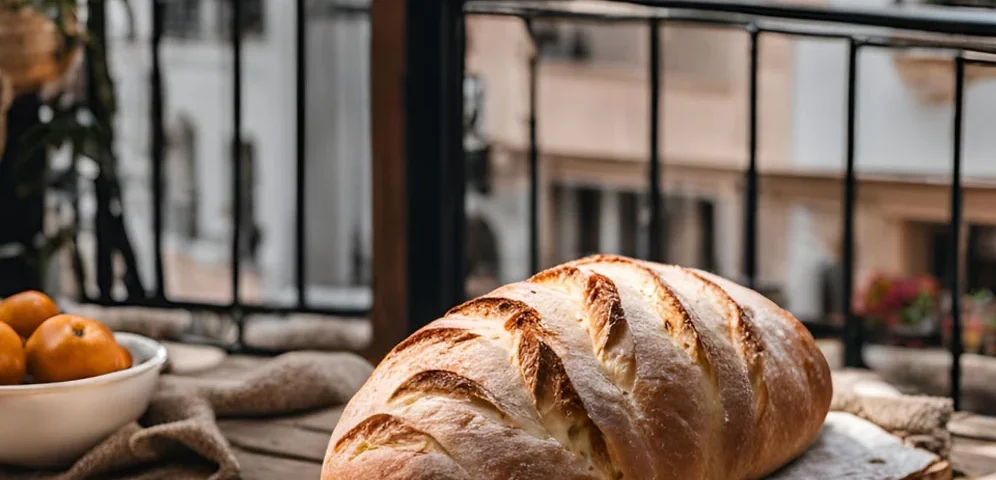
Lactic vs Non-Lactic Butter: Which is Better ?
October 30, 2024
The Difference Between Casein and Whey Proteins: A Comprehensive Guide
November 18, 2024Here’s a comprehensive guide to baking sourdough bread, covering everything from preparing your starter to the final baking process. This guide will help you through each step, ensuring that you can create a delicious loaf of sourdough bread at home.
Complete Guide to Baking Sourdough Bread
Step 1: Prepare Your Sourdough Starter
What You Need
- Whole wheat or all-purpose flour
- Filtered water
- A clean glass or plastic container
- A kitchen scale (optional but recommended)
Creating a Sourdough Starter
- Day 1: In your container, mix 100 grams (about 3/4 cup) of whole wheat flour with 100 grams (about 1/2 cup) of filtered water. Stir until combined. Cover loosely with a cloth and let it sit at room temperature for 24 hours.
- Day 2: Check for bubbles. You may not see much activity yet. Discard half of the mixture (about 100 grams) and add another 100 grams of flour and 100 grams of water. Mix well and cover loosely again.
- Days 3-7: Continue the feeding process daily. You should start seeing bubbles and the starter should begin to rise. Once it doubles in size within 4-6 hours of feeding, it’s ready to use.
- Storing the Starter: If you plan to bake regularly, keep your starter in the fridge and feed it once a week. For baking, take it out a day before, feed it, and let it come to room temperature.
Step 2: Gather Your Ingredients
Basic Ingredients for Sourdough Bread
- Active Sourdough Starter: 100 grams
- Water: 350 grams (room temperature)
- Bread Flour: 500 grams
- Salt: 10-15 grams (about 2 teaspoons)
Step 3: Mix the Dough
- Autolyse: In a large mixing bowl, combine the bread flour and 300 grams of water (reserve 50 grams of water for later). Mix until no dry flour remains. Cover with a damp cloth and let rest for 30 minutes to 1 hour. This process helps develop gluten.
- Add Starter and Salt: After the autolyse, add 100 grams of your active sourdough starter and the reserved 50 grams of water to the dough. Mix until fully incorporated.
- Add Salt: Sprinkle the salt over the dough and mix well, pinching and folding the dough to combine. You can use wet hands to prevent sticking.
Step 4: Bulk Fermentation
- First Rise: Cover the bowl with a damp cloth or plastic wrap and let it rise at room temperature for 4-6 hours, depending on the ambient temperature. The dough should roughly double in size and have a slightly domed top.
- Stretch and Fold: During the first two hours of the bulk fermentation, perform a series of stretch and folds every 30 minutes. To do this, wet your hand, grab one side of the dough, stretch it up, and fold it over itself. Rotate the bowl and repeat until you have stretched all sides of the dough (4 times total).
Step 5: Pre-Shaping and Shaping
- Pre-Shape: Once the bulk fermentation is complete, gently turn the dough out onto a lightly floured surface. Using a bench scraper, divide the dough into two equal pieces if you want to make two loaves. Pre-shape each piece into a round by gently folding the edges into the center. Let them rest for about 20-30 minutes, covered with a cloth.
- Final Shape: After the rest, shape the dough into your desired shape (round or oval). For a round loaf, flip the dough over, gently stretch it, and fold the edges towards the center again. Flip it back over so the seams are on the bottom and create tension by pulling the dough towards you.
Step 6: Proofing
- Final Proof: Place your shaped dough into a proofing basket (banneton) lined with flour to prevent sticking, seam side up. Cover with a cloth or plastic wrap. Let it proof at room temperature for 1-2 hours, or for a slower fermentation, place it in the refrigerator overnight (8-12 hours).
Step 7: Preheat the Oven
- Preheat: About 30 minutes before you plan to bake, preheat your oven to 450°F (230°C). Place a Dutch oven or baking stone inside to heat up.
Step 8: Scoring and Baking
- Prepare for Baking: When the dough is ready to bake, carefully remove the hot Dutch oven from the oven. Place a piece of parchment paper over the dough and flip it out onto the parchment.
- Score the Dough: Using a sharp blade or a lame, score the top of the dough with a shallow cut. This allows the bread to expand during baking.
- Bake: Carefully place the dough (with parchment) into the hot Dutch oven. Cover with the lid and bake for 30 minutes. After 30 minutes, remove the lid and bake for an additional 15-20 minutes until the bread is golden brown and sounds hollow when tapped.
- Cool: Remove the bread from the oven and let it cool on a wire rack for at least an hour before slicing.
Step 9: Enjoy Your Sourdough Bread
Once your sourdough bread has cooled, it’s ready to be sliced and enjoyed! The flavor and texture will improve as it rests, so consider waiting a day before cutting into it for the best experience.
Tips for Baking Perfect Sourdough Bread
- Use Quality Ingredients: High-quality flour and water can significantly affect the flavor and texture of your bread.
- Temperature Control: Warmer temperatures speed up fermentation, while cooler temperatures slow it down. Adjust your proofing times based on your kitchen’s temperature.
- Practice Patience: Sourdough baking is as much an art as it is a science. Don’t be discouraged by early failures; every bake is an opportunity to learn.
- Experiment: Feel free to experiment with different flours (like whole wheat, rye, or spelt) and add-ins (like seeds, nuts, or herbs) to customize your sourdough.
Conclusion
Baking sourdough bread at home can be a rewarding and enjoyable experience. By following this guide, you’ll not only create delicious bread but also deepen your understanding of the science and artistry behind it. Embrace the process, and happy baking!



